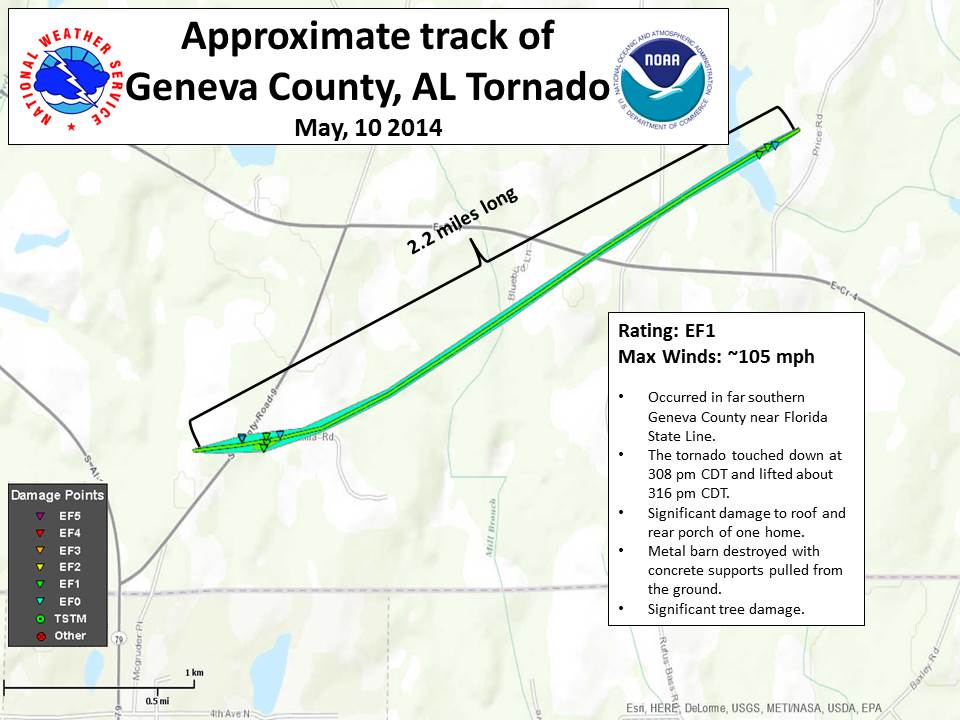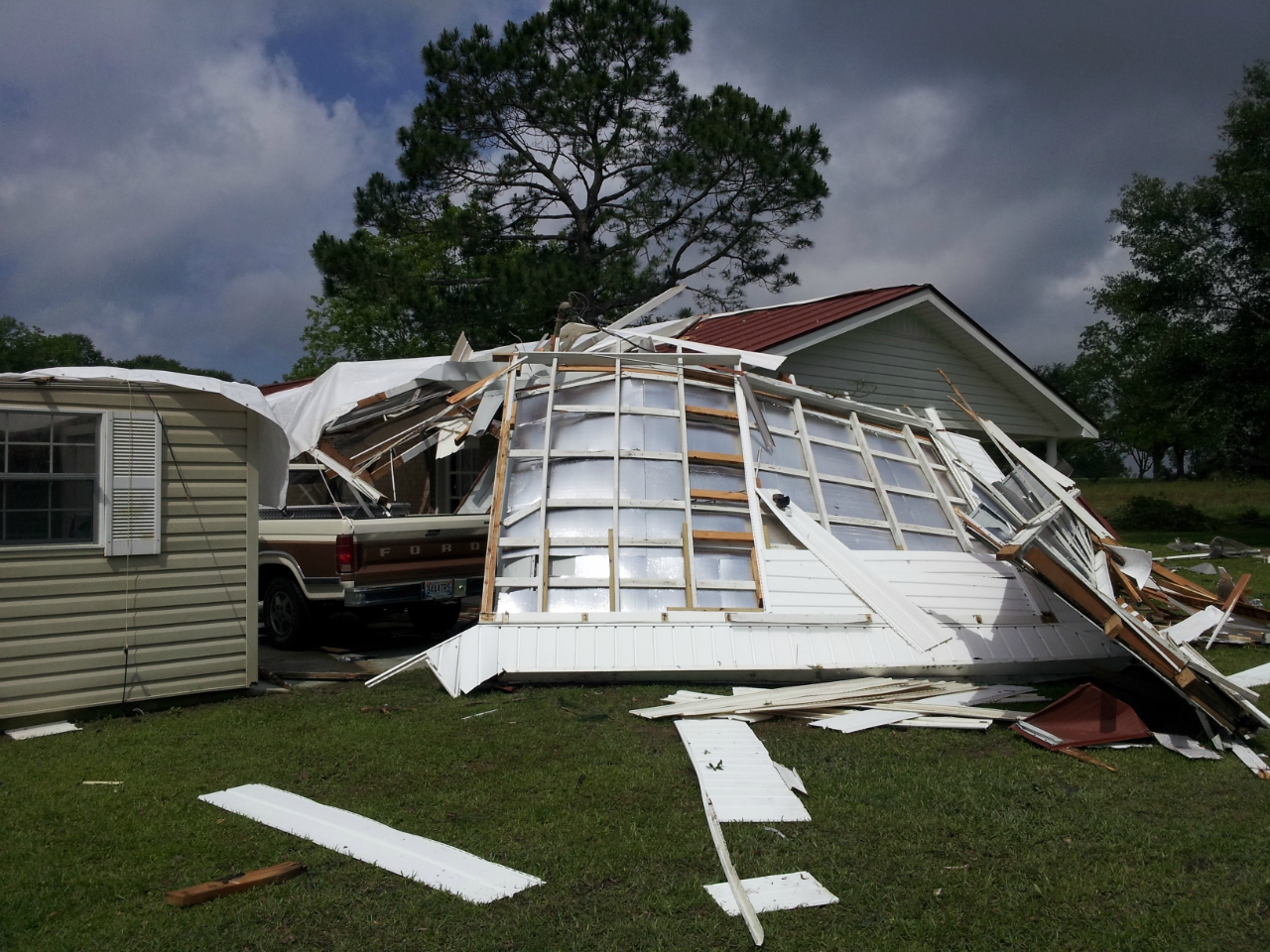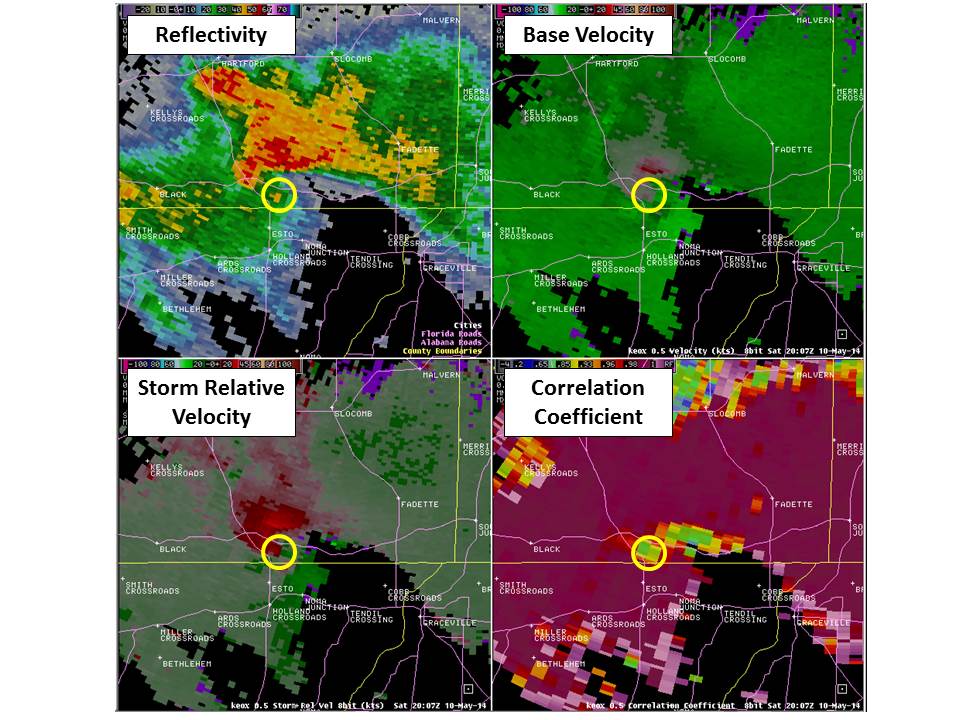Tallahassee, FL
Weather Forecast Office
| Geneva County, Alabama Tornado of May 10, 2014 |
Several small supercells formed in far southeastern Alabama on the afternoon of May 10. The leading cell in the group generated a tornado in southeastern Geneva County. A National Weather Service Survey Team found that an EF1 tornado touched down just north of the Florida State line along County Road 9. The tornado began at approximately 3:08 pm CDT Saturday afternoon and lifted about 8 minutes later. Figure 1 shows the approximate track of the tornado. Figure 2 shows a home that was damaged by the tornado. Figure 3 shows damage to a metal barn where the concrete bases of the steel supports were pulled from the ground.
Figure 1. Map showing the approximate track of EF1 tornado that touched down in Geneva County, AL, on May 10, 2014. Click here for the KML File.
Figure 2. A home along County Road 9 in Geneva County damaged by an EF1 tornado on May 10, 2014.
Figure 3. A metal barn destroyed by an EF1 tornado on May 10, 2014. The concrete foundations for the steel supports were pulled from the ground (inset).
Figure 4 shows 4-panel images from the KEOX radar valid as the tornado was touching down. The yellow circle denotes the approximate location of the tornado. Notice the distinctive supercellular shape of the storm in the reflectivity and the rotation (red next to green) in the Storm Relative Velocity panel. This circulation was even stronger higher off the ground. The circled area of low Correlation Coefficient values actually indicates debris being lifted into the air by the tornado.
Figure 4. A 4-panel image from the Ft. Rucker, AL (KEOX) from 10 May 2014. Clockwise from top left, the images depict base reflectivity, base velocity, storm-relative velocity and correlation coefficient, all on the 0.5-degree slice. The approximate location of the tornado is indicated by the yellow circle. Click the image for a larger view.
This page was authored by Parks Camp. The NWS damage survey was conducted by Alex Lamers and Katie Moore.
Current Hazards
Hazardous Weather Outlook
National Outlook
Rip Current Risk
Local Storm Reports (Text)
Local Storm Reports (Map)
Submit a Storm Report
Radar Imagery
National
Florida Panhandle (EVX)
Southwest Alabama (EOX)
Tallahassee (TLH)
Valdosta (VAX)
Current Weather
Observations (Map)
Observations (Text)
Observed Precipitation
Rivers and Lakes
Satellite Images
Upper Air Sounding
Forecasts
Aviation Weather
Fire Weather
Forecast Discussion
Forecast Text Products
Hydrology
Local Model Data
Marine Weather
Tropical Weather
Climate
Climate Text Products
Climate Graphs
CoCoRAHS
Drought
Local Data and Records
ENSO
Tropical Cyclone Reports
US Dept of Commerce
National Oceanic and Atmospheric Administration
National Weather Service
Tallahassee, FL
1017 Academic Way
FSU, Love Bldg, 4th Floor
Tallahassee, FL 32306-4509
850-942-8833 (person) or 850-942-8851 (recording)
Comments? Questions? Please Contact Us.





